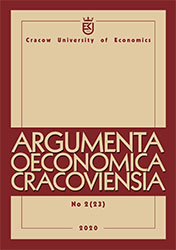A Comparative Study of the Power of Parametric and Permutation Tests for a Multidimensional Two-sample Location Problem
A Comparative Study of the Power of Parametric and Permutation Tests for a Multidimensional Two-sample Location Problem
Author(s): Dominika Polko-ZającSubject(s): Economy, Business Economy / Management, Socio-Economic Research
Published by: Wydawnictwo Uniwersytetu Ekonomicznego w Krakowie
Keywords: permutation tests; comparing populations; power of test; Monte Carlo simulation; R software
Summary/Abstract: Objective: A comparison of multidimensional populations is a very interesting and common statistical problem. It most often involves verifying a hypothesis about the equality of mean vectors in two populations. The classical test for verification of this hypothesis is the Hotelling’s T2 test. Another solution is to use simulation and randomization methods to test the significance of differences between the studied populations. Permutation tests are to enable statistical inference in situations where it is not possible to use classical parametric tests. These tests are supposed to provide comparable power to parametric tests with a simultaneous reduction of assumptions, e.g. regarding the sample size taken or the distribution of the tested variable in the population. The purpose of this study is a comparative analysis of the parametric test, the (usual) permutation test, and the nonparametric permutation procedure using two-stage ASL determination. Research Design & Methods: The study considered the analysis of multivariate data. The paper presents theoretical considerations and refers to the Monte Carlo simulation. Findings: The article presents a permutational, complex procedure for assessing the overall ASL (achieved significance level) value. The applied nonparametric statistical inference procedure uses combining functions. A simulation study was carried out to determine the size and power of the test under normality. A Monte Carlo simulation made it possible to compare the empirical power of this test with that of Hotelling’s T2 test. The most powerful test was the permutation test based on a two-stage ASL determination method using the Fisher combining function. Implications/Recommendations: The advantage of the proposed method is that it can be used even when samples are taken from any type of continuous distributions in a population. Contribution: The proposed test can be used in the analysis of multidimensional economic phenomena.
Journal: Argumenta Oeconomica Cracoviensia
- Issue Year: 2/2020
- Issue No: 23
- Page Range: 69-79
- Page Count: 11
- Language: English

